Designing a basic herb garden layout for beginners involves considering the types of herbs to grow, choosing plants based on sunlight and space requirements, and making minor soil improvements.
When planning your herb garden, select the types of herbs you want to grow. You can choose from a variety of culinary herbs such as basil, parsley, and thyme, or medicinal herbs like chamomile and echinacea. Each herb has its own unique flavor and health benefits, so select the ones that interest you the most.
Next, consider the sunlight requirements of each herb. Some herbs require full sun, while others prefer partial shade. Ensure that you choose the right location for each herb, according to their sunlight needs. Space is another factor to consider, as some herbs spread and grow much larger than others. If you have limited space, you can grow your herbs in containers, which is an excellent option.
Improving soil drainage is essential for the healthy growth of your herb garden. You can achieve this by adding organic matter or compost to the soil. This can enhance drainage and soil quality, leading to better plant growth.
Before starting your herb garden, it’s important to learn about the different plant families and their specific needs. Creating a suitable growing space that mimics the natural environment of the herbs is also crucial for their success. You can educate yourself through gardening resources, books, or joining gardening clubs.
Lastly, it’s recommended to purchase herbs from local nurseries or reputable sources that provide organic, non-GMO seeds. This ensures that you are getting high-quality herbs that will thrive in your garden.
Key Takeaways:
- Choose the types of herbs you want to grow based on your interests and needs.
- Consider the sunlight and space requirements of each herb.
- Improve soil drainage by adding organic matter or compost.
- Educate yourself about different herb plant families and their specific needs.
- Purchase herbs from local nurseries or reputable sources that provide organic, non-GMO seeds.
Types of Herbs for Your Basic Herb Garden
When starting an herb garden, it is important to choose the right types of herbs. There are two main categories of herbs: culinary herbs and medicinal herbs. Culinary herbs like oregano, basil, cilantro, and parsley can provide fresh and flavorful ingredients to spice up your favorite dishes. Medicinal herbs like chamomile, calendula, echinacea, and yarrow can be made into teas, tinctures, and lotions to address common ailments.
It is also important to consider the needs of the herbs in terms of sunlight and space. Some herbs require full sun, while others prefer partial shade. Additionally, some herbs are perennials and will come back year after year, while others are annuals and will need to be replanted each year. In terms of space, it is important to give herbs enough room to grow, and it is helpful to map out the garden to ensure proper spacing. Herbs can also be grown in containers, which allows for more control over growing conditions.
Choosing easy-to-grow herbs is recommended for beginners. Some easy-to-grow culinary herbs include mint, thyme, and sage, while easy-to-grow medicinal herbs include lavender, lemon balm, and St. John’s Wort.
Lastly, it is important to consider soil conditions for herbs. Most herbs prefer well-draining soil, and adding organic matter or compost can help improve drainage. Overall, starting an herb garden can be a rewarding experience, and choosing the right types of herbs is crucial for success.
Choosing Herbs Based on Sunlight Requirements
Different herbs have varying sunlight requirements, so it’s important to observe how much sunlight your garden gets before selecting plants. Some herbs, like basil and thyme, thrive in full sun for most of the day, while others, like cilantro and parsley, prefer partial shade. There are also herbs, like mint and lemon balm, that can grow in both sun and shade.
When choosing herbs based on their sunlight requirements, it’s also important to consider the space available in your garden. Some herbs, like mint and oregano, can spread and grow quite large, so they may take up a lot of space. It’s best to research the specific space requirements of each herb before planting, so you can give them enough room to grow.
If you’re short on space, consider growing herbs in containers. This is a great option for those living in urban areas, where outdoor space may be limited. You can plant herbs in small pots or even repurpose containers like old teapots or tin cans.
Whether planting herbs in the ground or in containers, it’s important to improve soil drainage by adding organic matter or compost. This can help prevent root disease and promote healthy growth.
Before starting your herb garden, it’s also recommended to learn about the different herb plant families and their unique needs. Creating a specific growing space for herbs, such as a raised garden or container, can help replicate the environment in which they originated.
When sourcing herbs, it’s best to buy from local nurseries or growers to ensure the plants have not been treated with harmful chemicals. It’s also possible to start herbs from seeds, which can be obtained from reputable sources. Understanding basic gardening terminology, such as perennial and annual plants, will also be helpful when starting an herb garden.
By choosing the right herbs for your garden based on their sunlight requirements and space needs, improving soil drainage, and providing a suitable growing space, you can successfully start your own herb garden. Incorporating herbs into your garden can add beauty, fragrance, and flavor to your space, making it a rewarding and fulfilling experience.
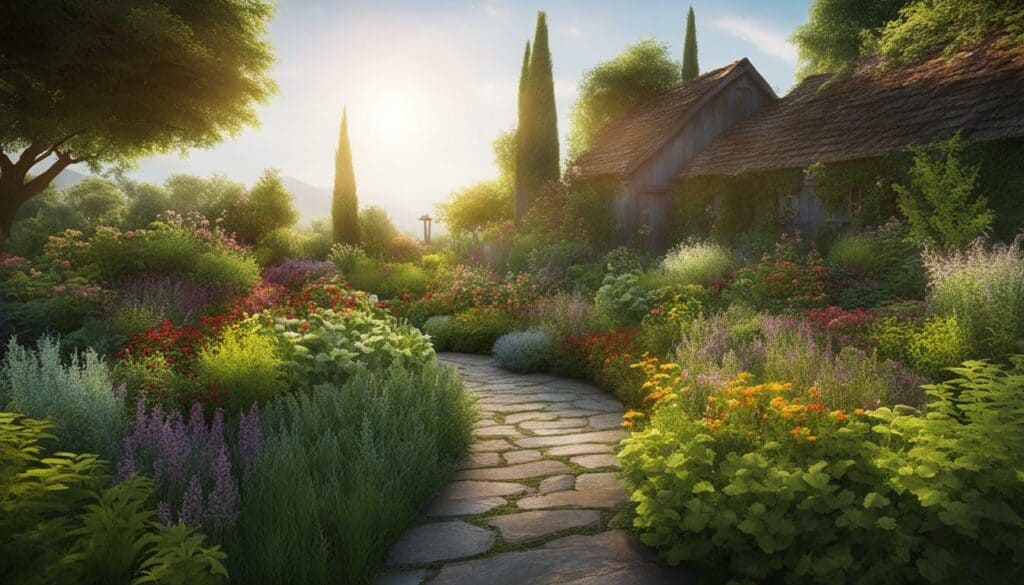
Considering Space Requirements for Your Herb Garden
It’s also important to consider the space requirements of herbs, as some herbs spread and grow quite large. When designing your basic herb garden layout, make sure to map out the space each herb needs on graph paper. This will help you determine how many plants you can fit into your garden and where to place each one.
If you have limited space, growing herbs in containers is a great option. Containers are available in a variety of sizes and can be placed on a balcony, patio, or windowsill. This is also a great way to grow herbs indoors, especially during the colder months. When choosing containers, make sure they have drainage holes to ensure proper soil drainage.
Herbs can also be grown in hanging baskets, which can save additional space in your garden. This is a particularly good option for herbs such as thyme and oregano, which will trail down the sides of the basket.
Overall, taking into account the space requirements of herbs will help ensure that your herb garden is healthy and productive. Whether you have limited space and need to grow herbs in containers or have ample garden space, planning ahead will lead to a successful and thriving herb garden. To improve soil drainage in your garden, consider adding organic matter or compost to the soil.
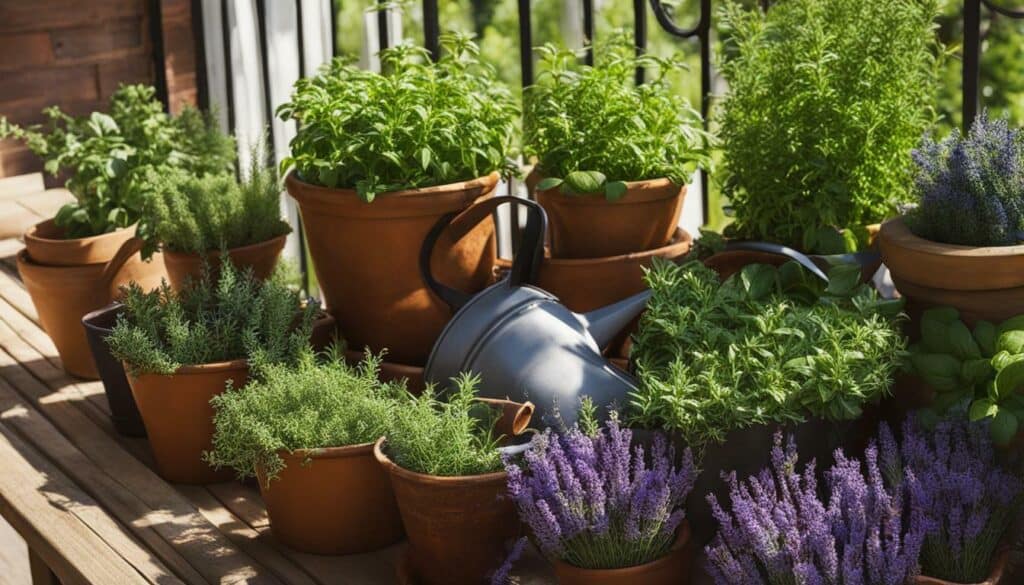
Improving Soil Drainage for Healthy Herb Plants
Improving soil drainage by adding organic matter or compost can help prevent root disease. This is crucial for the healthy growth of herb plants and should be considered when starting an herb garden. When choosing plants, it is important to consider the unique needs of each plant, including its sunlight, space, and soil quality requirements.
Culinary herbs such as oregano, basil, cilantro, and parsley provide fresh flavors to dishes, while medicinal herbs such as chamomile, calendula, and echinacea have healing properties. It is also important to consider the needs of pollinators and include flowers that attract bees and butterflies in the herb garden.
When growing herbs in containers, it is essential to ensure good drainage by adding organic matter or compost to the soil. This helps to improve soil structure and nutrient availability. Categorizing herb plants into plant families can help in understanding their unique growing needs, including soil requirements.
Creating a suitable growing space for herbs, such as raised gardens or containers, can ensure a more successful herb garden. When starting from seed, it is recommended to opt for organic, non-GMO seeds and source herbs from local nurseries or growers to ensure healthy plants.
Learning about basic gardening terms and following plant care instructions for sunlight, watering, and temperature requirements will help in the successful cultivation of herb plants. Amending soil with compost and peat moss are also important steps in creating a healthy growing environment for herb plants. By taking these steps, beginners can create a thriving herb garden that provides fresh herbs for culinary and medicinal use.
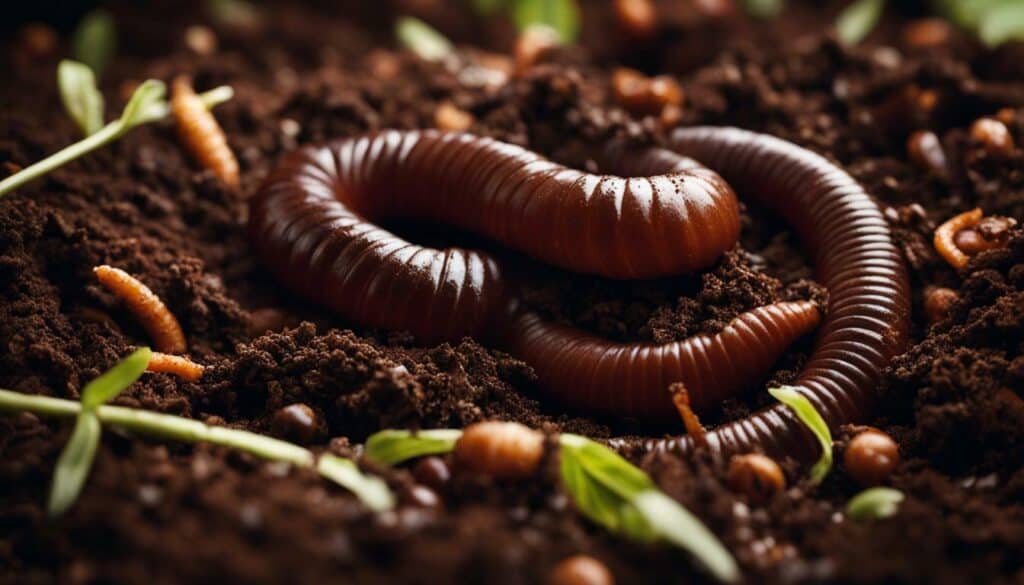
Learning About Herb Plants and Their Needs
It’s recommended to learn about herb plants and their needs, create a suitable growing space, and find reliable sources for herb plants or seeds. This knowledge will serve as a foundation for successful herb gardening, no matter the experience level.
There are many different types of herbs, and it’s essential to categorize them based on their unique characteristics. Herb plants belong to various plant families, such as the mint family, rosemary family, and parsley family. Understanding the family of each herb can give gardeners insight into their growing requirements since plants within the same family often share similar needs.
Culinary herbs are popular for their use in cooking and can provide fresh, flavorful ingredients. Some popular culinary herbs include oregano, basil, cilantro, parsley, and tarragon. On the other hand, medicinal herbs like chamomile, calendula, echinacea, and yarrow have various health benefits and can be used to make teas, tinctures, and more.
When selecting herbs for an herb garden, it’s crucial to consider factors like sunlight requirements and space. Some herbs thrive in full sun, while others prefer partial shade. Easier-to-grow herbs for beginners include basil, sage, thyme, catnip, dill, calendula, and chamomile. Understanding the sunlight and space requirements of herbs is crucial for their growth.
It’s also important to note that some herbs grow well in containers, which allows gardeners to have more control over their growing conditions, and can be a great option for those with limited space. Improving soil drainage is important for most herbs, and adding organic matter or compost can help with this. Amending the soil with compost and peat moss can improve its quality and ensure proper drainage.
Creating a suitable growing space for herbs is crucial, and using raised gardens or containers can provide better soil conditions. It’s important to research the specific needs of each herb plant and group them accordingly in the garden. Finding reliable sources for herb plants or seeds is essential for success. Local nurseries and growers are recommended sources for buying herbs, and using organic, non-GMO seeds is advisable when starting from scratch.
Understanding basic gardening terms and following plant care guidelines, like sun and water requirements, is vital for the health and growth of herb plants. Considering factors like height, temperature, and hardiness zones is also important in herb gardening.
Overall, learning about herb plants and their needs is crucial for successful herb gardening, allowing gardeners to enjoy the beauty and flavors of herbs for years to come. With the right knowledge, preparation, and care, anyone can grow a thriving herb garden, no matter their experience level.
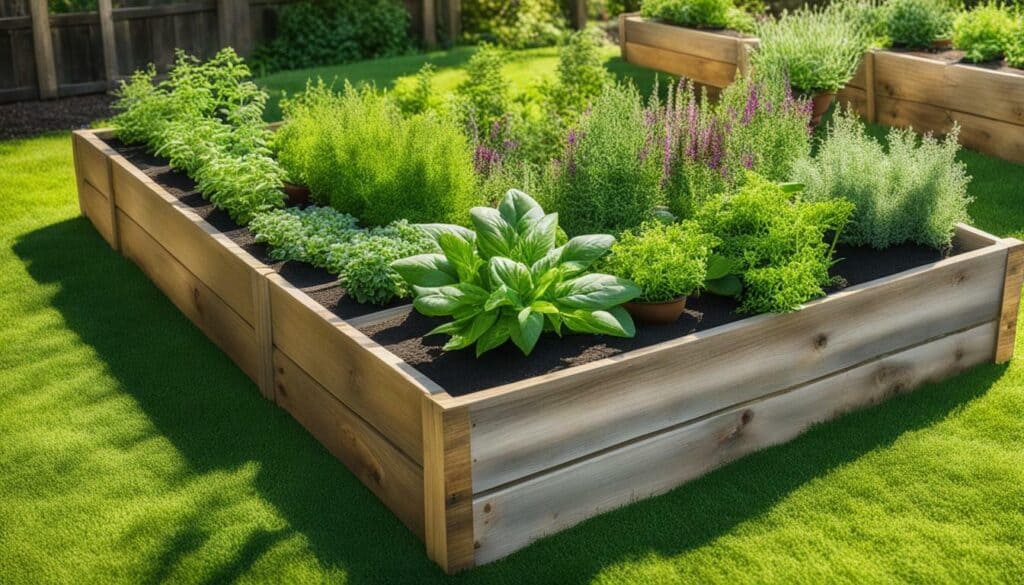
Suitable Herbs for Small Herb Gardens
The easiest herbs to grow include basil, sage, thyme, catnip, dill, calendula, and chamomile. These herbs are perfect for beginners with small herb gardens as they require minimal maintenance and can add fresh flavors and fragrances to your dishes. With limited space, it’s important to choose herbs that grow well together and can thrive in your garden’s growing conditions.
Consider creating a themed herb garden, such as a pizza herb garden, with herbs like basil, oregano, and parsley, or a tea herb garden, with herbs like chamomile, mint, and lavender. This can make it easier to select herbs that complement each other’s growing needs and give your garden a cohesive look.
When starting an herb garden, it’s best to begin with a few herbs and expand over time as you gain experience. Research the specific growing requirements for each herb, including the amount of sunlight, water, and space needed. Herbs that require similar growing conditions can be planted together to optimize space and resources.
One way to make the most of a small herb garden is by growing herbs in containers. Containers can be placed on balconies, patios, or even windowsills, giving urban gardeners the opportunity to grow herbs in limited spaces. Some herbs, like mint and chives, can be invasive and take over a garden if not contained, making them suitable for container gardening.
| Herb | Sunlight Requirements | Space Requirements |
|---|---|---|
| Basil | Full sun | 12-18″ apart |
| Chives | Full sun to part shade | 6-12″ apart |
| Mint | Part shade to full shade | 12-24″ apart |
When selecting herbs for your small herb garden, consider purchasing them from a trusted source, such as a local nursery or seed supplier. This will ensure that you’re getting healthy and high-quality plants. Additionally, focus on herbs that are well-suited for your region’s growing conditions to increase your chances of success.
Starting an herb garden can be a fun and rewarding experience, allowing you to connect with nature and incorporate fresh herbs into your meals. By selecting suitable herbs for small herb gardens, researching their growing requirements, and utilizing containers, you can create a thriving and beautiful herb garden in your limited space.
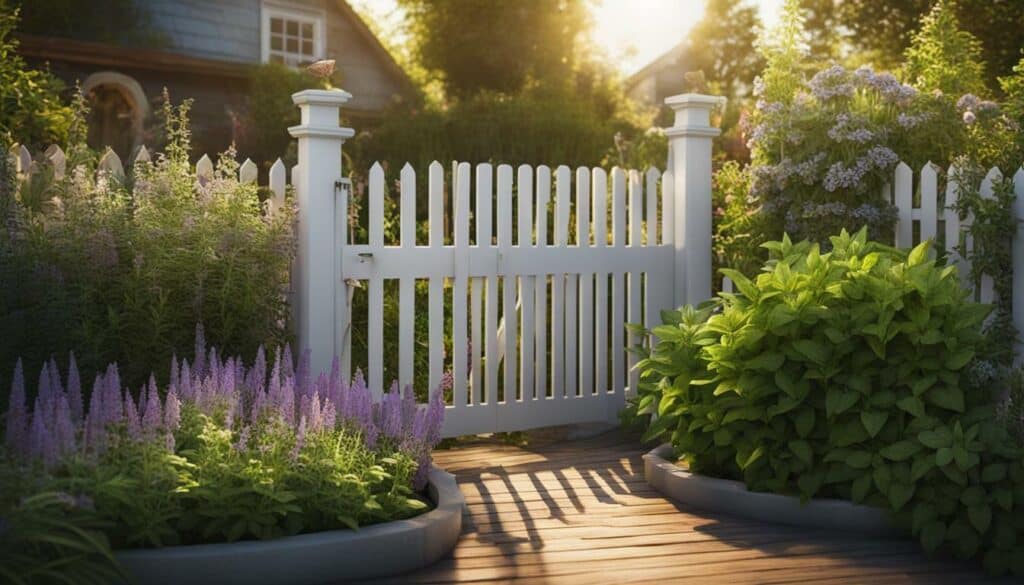
Popular Herbs Based on Sunlight Requirements
When starting an herb garden, it is important to consider the sunlight requirements of the herbs you choose to grow. Some popular sun-loving herbs include basil, echinacea, oregano, stevia, lavender, and thyme, which thrive in a warm, sunny spot that receives 6-8 hours of direct sunlight per day. These herbs not only add flavor to your meals but also have various medicinal properties.
On the other hand, shade-loving herbs like mint, chives, parsley, lemon balm, and cilantro can tolerate morning or evening sun and afternoon shade. These herbs are known for their fresh, aromatic flavors and can be used in a variety of dishes.
It is also essential to consider the space requirements of your herb garden, as many herbs can spread and grow quite large. Additionally, herbs can be grown in containers, making it easier to control their growing conditions. Growing herbs in containers is an excellent option for those with limited space, allowing you to enjoy fresh herbs even in urban areas.
When it comes to soil, most herbs simply require well-draining soil, but minor improvements like adding compost can improve drainage and prevent root disease. By improving the soil drainage, you can ensure healthy and thriving herb plants.
Lastly, it is recommended to learn about different herb plant families and their unique needs before starting an herb garden. By understanding the basics of herb gardening and selecting the right herbs based on sunlight requirements, gardeners can successfully grow and enjoy a variety of popular herbs. With these tips in mind, you can design a basic herb garden layout that suits your needs and preferences.
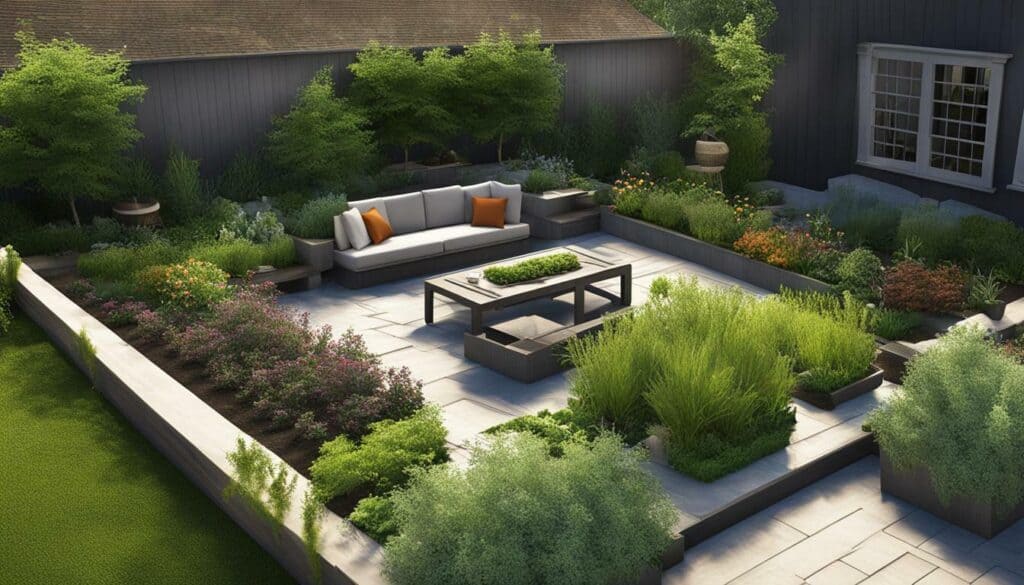
With suitable herbs planted in a well-designed garden, you can enjoy the beauty and benefits of fresh herbs all year round.
Growing Herbs in Containers – A Space-Saving Option
Growing herbs in containers is a good option, especially for urban areas, and can include herbs like mint, sage, and parsley. In fact, many culinary herbs can be grown in containers, providing fresh and flavorful ingredients for cooking. Additionally, medicinal herbs like chamomile, calendula, echinacea, and yarrow can be grown in containers for health and wellness purposes.
When choosing herbs for container gardening, it is important to consider their sunlight requirements. Some herbs thrive in full sun, while others prefer partial shade. For example, basil and thyme need at least six hours of direct sunlight, while parsley and cilantro can tolerate partial shade. It is also important to consider the size of the container and the space requirements of the herbs.
Even if you have limited space, certain herbs like mint, chives, parsley, lemon balm, and cilantro can be grown in small pots on a porch or balcony. Good drainage is essential for growing herbs in containers, so it is recommended to add organic matter or compost to improve soil drainage. This will help prevent water from collecting at the bottom of the container, which can lead to root rot.
Growing herbs in containers allows for easy access to fresh herbs and allows beginners to experiment with different varieties. It is a great way to start an herb garden, no matter how small your living space may be. So go ahead, and give it a try!
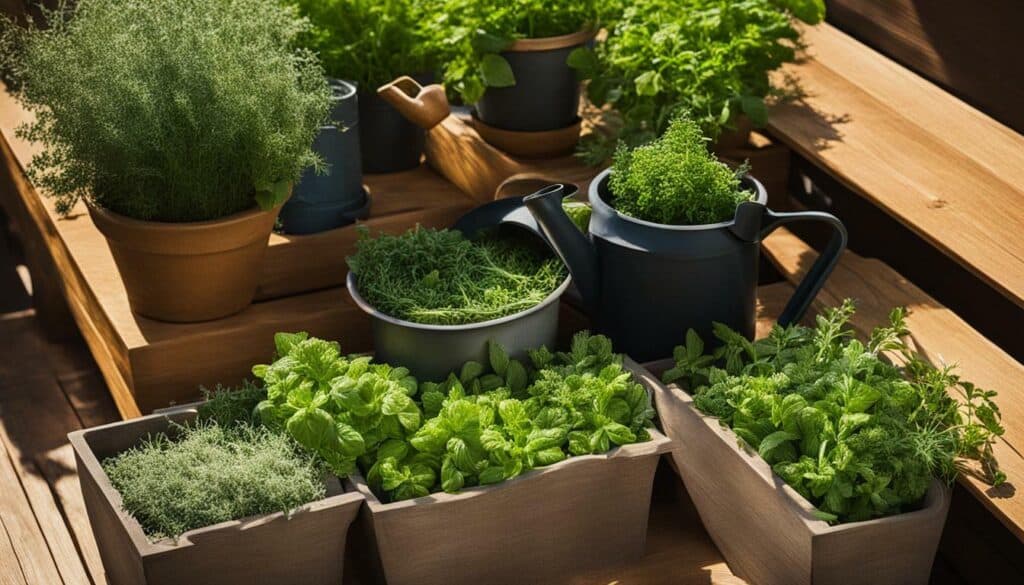
Conclusion
Designing a basic herb garden layout is an achievable and rewarding project for beginners, bringing fresh flavors and natural remedies to your home. It’s essential to choose the right herbs that suit your environment and provide them with the right amount of sunlight and space to grow. Improving soil drainage and considering container gardening can also help ensure a healthy crop.
It’s important to learn about different herb plant families and their unique needs. Seeking information from reliable sources, such as books, online forums, and local nurseries, can provide valuable guidance in growing herbs successfully.
In summary, with proper research and care, herb gardening is a fulfilling and enjoyable hobby for beginners. So, start designing your basic herb garden layout today to enjoy the natural benefits of fresh and flavorful herbs.
Happy Gardening!
What Are Some Easy Garden Designs to Incorporate Herbs into My Outdoor Space?
Looking to incorporate herbs into your outdoor space? Here are some beginners garden design tips for easy herb integration. Consider creating a dedicated herb bed or using containers for a versatile approach. Opting for raised beds can also prevent herbs from spreading vigorously. Additionally, incorporating pathways or stepping stones adds aesthetic appeal while ensuring easy access for maintenance.
FAQ
Q: What are the two main categories of herbs for a basic herb garden?
A: The two main categories of herbs are culinary herbs and medicinal herbs.
Q: Which herbs are easiest to grow for beginners?
A: The easiest herbs to grow for beginners include basil, sage, thyme, catnip, dill, calendula, and chamomile.
Q: How do I choose herbs based on their sunlight requirements?
A: Different herbs have varying sunlight requirements. Some popular sun-loving herbs include basil, echinacea, oregano, and lavender, while shade-loving herbs include mint, chives, parsley, lemon balm, and cilantro.
Q: What should I consider in terms of space requirements for my herb garden?
A: It’s important to consider the space requirements of herbs, as some herbs spread and grow quite large. Growing herbs in containers is a good option, especially for urban areas, and can include herbs like mint, sage, and parsley.
Q: How can I improve soil drainage for healthy herb plants?
A: Improving soil drainage can be done by adding organic matter or compost to the soil.
Q: Why is it important to learn about herb plants and their needs?
A: Learning about herb plants and their needs is crucial to ensure their optimal growth and health. It’s also important to create a suitable growing space for herbs.
Q: What are suitable herbs for small herb gardens?
A: Suitable herbs for small herb gardens include basil, sage, thyme, chives, parsley, mint, and cilantro.
Q: Can you suggest popular herbs based on their sunlight requirements?
A: Popular sun-loving herbs include basil, echinacea, oregano, and lavender, while shade-loving herbs include mint, chives, parsley, lemon balm, and cilantro.
Q: Is growing herbs in containers a good option for urban areas?
A: Yes, growing herbs in containers is a space-saving option, especially for those living in urban areas. Suitable herbs for container gardening include mint, sage, and parsley.
Q: What should be the main takeaways from this article?
A: The main takeaways from this article are to design a suitable basic herb garden layout, choose herbs based on their sunlight and space requirements, make minor soil improvements, learn about herb plants and their needs, and consider growing herbs in containers as a space-saving option.
Source Links
- https://howtoculinaryherbgarden.com/herb-gardening-for-beginners/
- https://bootsandhooveshomestead.com/herb-gardening-for-beginners/
- https://www.gardenary.com/blog/how-to-start-an-herb-garden
- https://www.bhg.com/gardening/plans/vegetable/classic-herb-garden-plan/
- https://www.daviddomoney.com/how-to-grow-a-beginners-herb-garden/
- https://www.hgtv.com/outdoors/flowers-and-plants/herbs/herb-garden-design-ideas-pictures
- https://www.retirefearless.com/post/how-to-design-an-herb-garden
- https://www.bbg.org/article/a_garden_of_shade-loving_herbs
- https://www.gardenary.com/blog/the-ultimate-guide-to-growing-herbs
- https://www.gardenary.com/blog/how-to-grow-herbs-in-a-small-space
- https://www.thespruce.com/planning-a-herb-garden-1402617
- https://extension.wvu.edu/lawn-gardening-pests/gardening/gardening-101/herb-gardening-for-beginners
- https://www.countryliving.com/gardening/a43329616/how-to-start-a-herb-garden/
- https://home.howstuffworks.com/how-to-grow-an-herb-garden.htm
- https://www.gardeningknowhow.com/edible/herbs/hgen/herb-garden-designs.htm
- https://www.homesandgardens.com/ideas/herb-garden-ideas
- https://www.gardeningknowhow.com/edible/herbs/hgen/full-sun-herbs.htm
- https://www.joyusgarden.com/top-13-herbs-for-full-sun/
- https://grocycle.com/container-herb-garden/
- https://aprettylifeinthesuburbs.com/how-to-plant-a-container-herb-garden/
- https://khelaherbs.com/blog/rectangular-herb-garden-layout
- https://khelaherbs.com/blog/herb-garden-designs
- https://bonnieplants.com/blogs/garden-fundamentals/how-to-grow-an-herb-garden





Leave a Reply